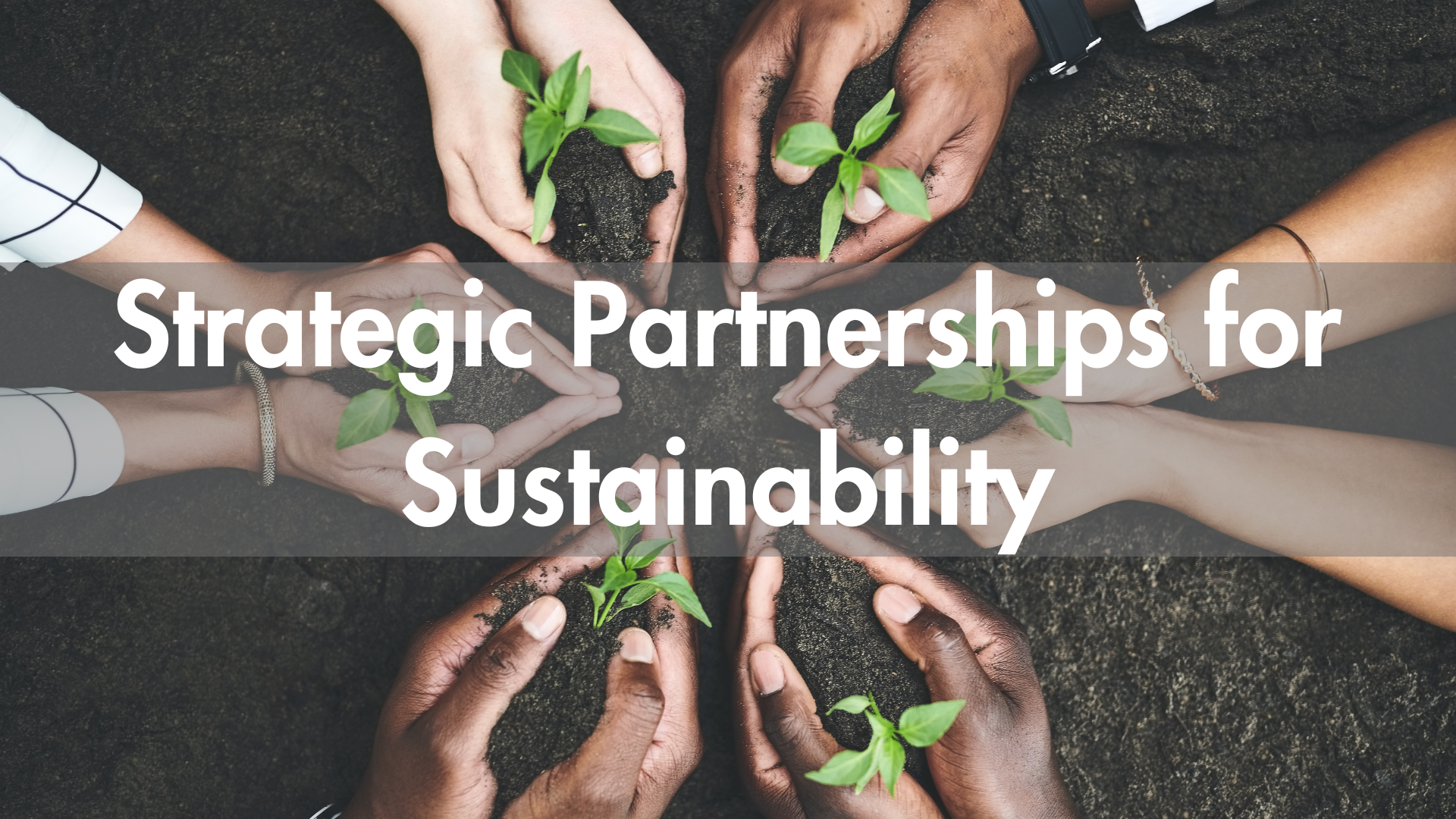
If you’re looking to save time, money, and resources on your sustainability initiatives, then you could likely benefit from leveraging strategic partnerships. Here are a few tips and examples on how to do so:
Co-invest in new technology with other local organizations. Sharing the capital costs of sustainable technologies can cut down on your initial investment and reduce your payback timeline. For example, you could invest in a shared renewable energy project, such as a solar minigrid, with other businesses on your street to reduce the infrastructure costs incurred by each participant. Another potential co-investment strategy could be to partner with an organization in your sector to purchase a multi-user membership to a data analytics tool. Both of your organizations might be interested in using the tool to make determinations such as the precise amount of material you should purchase, the energy intensity of complex processes, or the medium-term risk of regulatory non-compliance. By joining forces, you can both afford the platform and use it to maximize sustainability.
Co-design sustainable products with your suppliers. Engaging in a joint sustainable design project with a supplier can save you money and resources, and it will likely result in a well-integrated solution that reduces the negative impacts of both of your organizations. For example, you could work with a component supplier to co-design new packaging that can be used for their components and then reused for your final product. This could minimize waste and reduce your packaging costs. You might also collaborate with your supplier to develop a component that can be used across multiple products in your product line without requiring any adjustments. If successful, you could reduce overall manufacturing complexity and associated environmental impacts, while also enabling lower-cost bulk purchases of one single design.
Invest in supplier sustainability in exchange for priority pricing. If you have suppliers who lack sufficient funding to achieve their sustainability goals, you could partner with them to drive co-benefits. For instance, you might invest in organic farming and regenerative agriculture at a local farm in exchange for discounted prices on produce or fiber crops that you use to make your products.
Turn a waste processer into a supplier. Consider how you might partner with a waste processing company who can recycle your manufacturing, operational, or product waste to create new materials for your organization. Work with the facility to determine how waste materials like metal scraps, plastic trimmings, packaging waste, used paper, and sawdust should be processed such that they are easy for you to reuse as inputs. In this way, you can create your own circular economy while leveraging existing expertise and avoiding costly investments into your own recycling technology. If you can recycle at a low enough cost, then you may save money on material procurement by sizing down (or even eliminating) orders from your other suppliers.
Combine your operational processes with those of other organizations. Work with other local organizations to consolidate redundant resources. For example, if there are multiple organizations in the area that deliver different types of materials and products, then you could share delivery trucks. This might mean combining shipments or using a common logistics system to optimize routes and coordinate timing. Your efforts could reduce the number of vehicles in your fleets (and their associated costs), as well as lower overall transportation emissions. A similar kind of arrangement could be developed for sharing warehouses, technology platforms, and more.
Develop joint initiatives with groups who know the community best. Partner with an NGO or advocacy group that is already well-connected to your community in order to develop social and environmental impact solutions. The organization will have an existing understanding of community needs and will likely already have guiding principles to help you develop strategies that can connect you with your stakeholders, mitigate harm, and create value. By combining your financial contributions and executional capacity with the community organization’s stakeholder knowledge, cultural understanding, historical context, connections, and marketing resources, you can efficiently roll out an initiative that truly serves the community.
